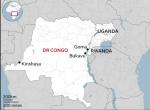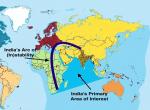Myanmar elections that concluded on 10th of November have resulted in a very convincing victory for Aung Sann Suu Kyi led National League for Democracy (NLD) party. The NLD increased its tally in the number of parliamentary seats in both the houses to 396 (258 in the Lower House and 138 in the Upper House) as compared to 390 won in the November 2015 elections while its main rival the military sponsored Union Solidarity Development Party (USDP) was not able to retain the number of seats held earlier. USDP had held the reins of power from 2011 to 2015 and it was defeated by NLD when it contested the general elections for the first time. Some of the USDP dominated seats like Naypitaw and in Mandalay saw NLD candidates winning resoundingly pointing towards the waning influence of Tatmadaw’s party.
No wonder that the USDP and military has been critical of the way Union Election Commission has conducted the elections. The USDP Chairman has also made allegations about electoral fraud but international observers and others have made no such observations. If the USDP were to get only 25 percent of the seats then along with 25 percent of the military reserved seats it would have become the ruling party.
The successful conduct of elections despite the Covid-19 environment and continued ethnic turbulence reflect on Myanmarese people’s strong desire to consolidate the gains made so far in the nature of democratic polity existing in Myanmar. On the other hand with 25 percent of parliamentary seats reserved for the military, the power equations between the civilian government and the military are unlikely to change. Nevertheless, the elections mark another important milestone in Myanmar’s march towards democracy. Full democracy will not be achieved till military’s representation in the parliament is chipped away to zero. That would require unrelenting efforts on the part of people, political parties and some realisation on the part of military that it is time for them to go back to the barracks.
With the return of Aung San Suu Kyi to power it would be useful to assess what implications does the renewed and strengthened mandate has for Myanmar’s internal and external policies. While there would be a degree of continuity in its policies on multiple fronts it has several challenges to deal with and would have to a show discernible progress in areas of economic development, health security, and ethnic reconciliation as well as in working with several foreign players to achieve such goals.
Before the onset of the pandemic Myanmar’s economy was one of the fastest growing economies in the region thus immediate task for the NLD led government is to get the Covid-19 impacted economy back on track. Creating jobs and obtaining Foreign Direct Investment are high on the government’s agenda. With 1676 Covid-19 deaths (and confirmed cases 74,882 as on 21 November) it has had more fatalities compared to its mainland South East Asian neighbours like Laos, Thailand and even Cambodia and Vietnam. Thus dealing with the fast spreading coronavirus would have to remain its priority.
Further, the peace process which has been unduly delayed also needs to see some degree of conclusion. In the fourth session of the 21st Century Panglong Union Peace Conference held in August this year the government, military, ethnic armed organisations (EAOs) and the political parties agreed to work for “building a democratic federal union beyond 2020”. But the new government would have to work overtime to find a modus vivendi in meeting the competing demands of various stakeholders especially those of military which prefers a unitary structure and EAOs who want a federal structure of the union with greater autonomy.
From the foreign policy perspective China will continue to remain an important factor for the new government despite some reservations on the part of both civil government and Myanmar’s military. As Chairman of the Chinese Communist Party Xi Jinping congratulated the NLD Chairperson Aung San Suu Kyi on her electoral win and he went on to emphasise on the need for making joint efforts to strengthen cooperation on China Myanmar Economic Corridor. China remains obsessed with enlarging the scope of its Belt and Road Initiative (BRI) projects in Myanmar. However, the NLD government has not taken any constructive steps to get CMEC projects agreed to during President Xi Jinping’s visit to Myanmar in January this year. The new government would have to tread very cautiously to avoid pitfalls of a debt trap threat posed by BRI projects.
Moreover, China also exercises some leverages with Myanmar’s EAOs and plays a double sided game to realise its strategic objectives. Myanmar military leadership has been critical of Chinese arms being supplied to insurgent groups like Arakan Army and others.
Myanmar would also be hard put to obtain FDI from the US and the western countries because of its obtuse policies on Rohigya Muslims and associated issues. Suu Kyi on her part had defended its military/government’s actions against the atrocities meted out to Rohingya Muslims in Rakhine state of Myanmar at the International Court of Justice. However, Suu Kyi’s defence of its Rohingya policies resonates well with the dominant narrative in Myanmar and some analysts believe that it was one of the factors which brought in more votes for NLD this time. Nevertheless, Suu Kyi in her second term needs to build bridges with the US and western countries if she wants to reduce the pervasive influence of China and accelerate its economic growth and development.
Japan, South Korea and Thailand are the other countries which have been promoting major developmental projects in Myanmar for instance the Dawei Special Economic Zone and some others. In November alone Japan provided a lower than market rate loan worth more than 414 million USD for infrastructure development and financing business. One estimate of November 2020 projects Myanmar’s economic growth for Financial Year (FY) 2021 at 5.9 percent with a recovery to 6.8 percent in FY 2022. The new government would need to create suitable conditions for getting FDI and imparting impetus to growth.
In so far as India is concerned it has not only engaged Myanmar’s military governments earlier but also has enhanced its engagement with Aung San Suu Kyi’s administration in the first term. After PM Narendra Modi took over reins of power in May 2014 he attended the ASEAN Summit in Myanmar in November 2014 and had unveiled India’s ‘Act East Policy’. PM Modi during the course of his visit in November 2014 had also met Aung San Suu Kyi who considers India as her second home. During the last six years the bilateral relationship has made considerable progress across several areas including political, security and economic cooperation.
While congratulating Daw Aung San Suu Kyi on NLD’s victory in elections PM Modi tweeted that “the successful conduct of polls is another step in the ongoing democratic transition in Myanmar”. He also looked forward to strengthening traditional bonds of friendship with Myanmar.
India’s major security concern has been a number of insurgent groups that operate along the Indo-Myanmar border, take shelter in Myanmar and carry out ambushes on Indian security forces besides indulging in gun running, narcotics smuggling and such other illegal activities. Of late, Myanmar military has carried out a number of campaigns against such groups on its own as well as in coordination with Indian forces to weed out such elements. For instance, coordinated operations were carried out early this year against Arakan Army (AA). AA is an insurgent group operating in Arakan and Chin states has been fighting Tatmadaw in Paletwa and along the road to Mizoram border where India’s Kaladan multi-modal transit and transport project is being developed.
New milestones in defence cooperation have also been achieved with India gifting a diesel-electric Kilo class submarine INS Sindhuvir to the Myanmar Navy last month. Myanmar Navy has rechristened it as UMS Minye Theinkhathu and the submarine participated in the Myanmar Navy’s Bandoola fleet exercise on October 15. Strengthening cooperation on maritime security, surveillance, improvement of interoperability and coordinated patrolling have been hallmarks of bilateral cooperation on the naval front. Such cooperation is likely to receive fillip during the next term of NLD government because of several contextual and strategic factors.
The visit of our Foreign Secretary Harsh Vardhan Shringla along with the Army Chief General MM Naravane to Myanmar in first week of October almost over a month before Myanmar’s elections showcases India’s strong desire to maintain the momentum of the upward trajectory in the bilateral relationship. But where India-Myanmar bilateral relationship has been lacking is in the areas of economic engagement and trade. The bilateral trade has been stagnant around 2 billion USD or less for several years now; even though India is the 11th highest position in terms of investment (approximately 772 million USD) in Myanmar this amount appears to be very meagre for country of India’s size, resources and being home to many indigenous multibillion private and public enterprises. Further, India also needs to make strenuous efforts for completion of its ongoing development projects in Myanmar which have been unduly delayed for a variety of reasons.
Lastly, with Aung San Suu Kyi becoming over 75 years old it is also time for her to establish a clear successor and a group of second rung leaders who could continue with NLD’s overall political agenda. Whether Suu Kyi would be able to achieve full democracy and fructify the peace process in her second term only time will tell.
(The paper is the author’s individual scholastic articulation. The author certifies that the article/paper is original in content, unpublished and it has not been submitted for publication/web upload elsewhere, and that the facts and figures quoted are duly referenced, as needed, and are believed to be correct). (The paper does not necessarily represent the organisational stance... More >>
Image Source: https://cdn.dnaindia.com/sites/default/files/styles/full/public/2020/11/13/937361-suu-kyi-modi.jpg











Post new comment